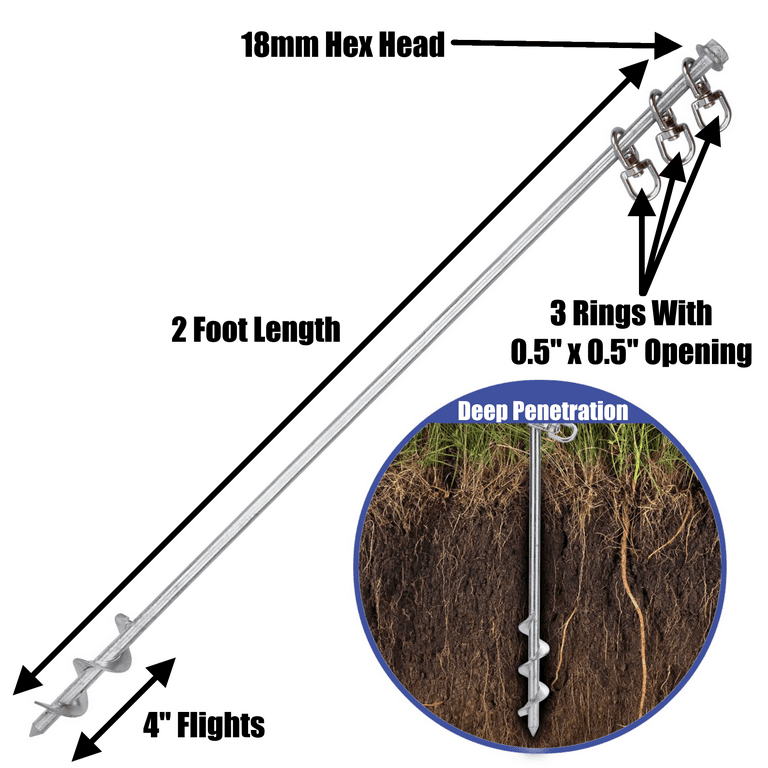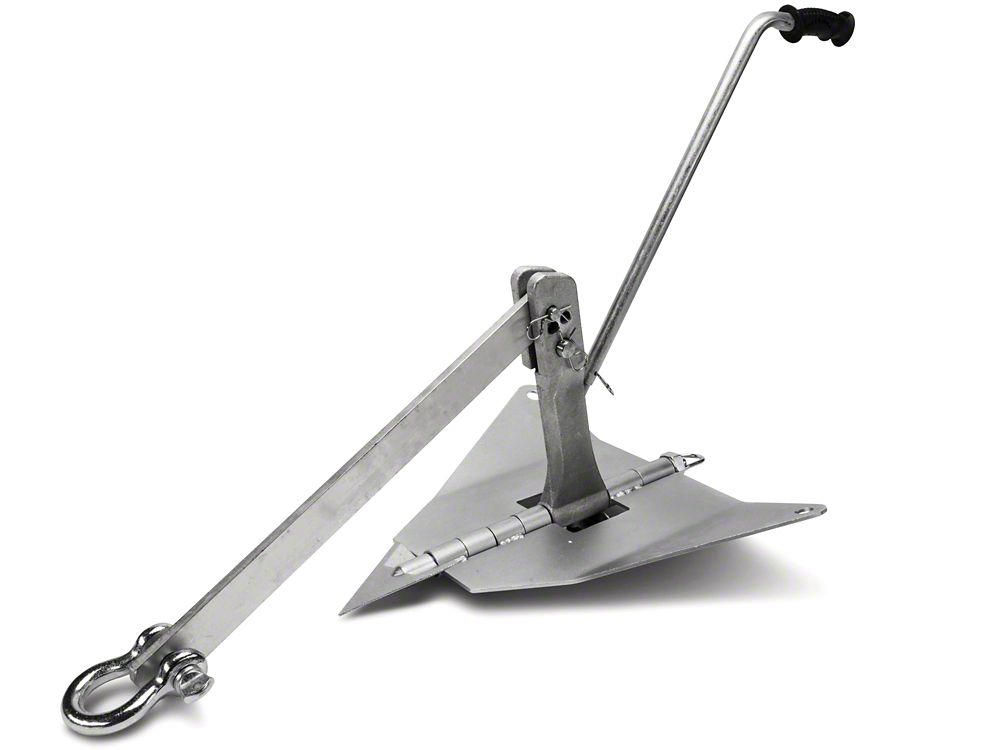Must-Have Qualities to Consider When Buying a High-Quality Ground Anchor
Must-Have Qualities to Consider When Buying a High-Quality Ground Anchor
Blog Article
Explore the Different Kinds Of Ground Support for Your Following Job
When beginning on a building and construction or landscaping task, understanding the numerous sorts of ground anchors available is essential to making sure both stability and durability (Ground Anchor). From auger supports, which succeed in diverse dirt problems, to risk anchors designed for short-term installations, the alternatives are many. Furthermore, concrete and screw anchors present distinct benefits in certain scenarios, while deadman supports are tailored for applications needing resistance to lateral pressures. The choice of an ideal support type can dramatically influence the total success of your project, triggering further exploration right into their particular benefits and applications.

Auger Anchors
Auger supports are a prominent selection in various building and construction and landscape design tasks as a result of their unique layout and efficient securing abilities. These supports contain a helical screw-like shaft that is driven right into the ground, allowing for a safe and stable hold. The spiral style promotes very easy setup and optimizes resistance against side forces, making auger supports particularly reliable in applications such as fencing, short-lived structures, and erosion control.
The installation procedure of auger supports is fairly simple. Auger supports can be conveniently gotten rid of and recycled, which includes to their cost-effectiveness and sustainability.
One of the significant benefits of auger supports is their capacity to disperse tons uniformly throughout the bordering dirt, decreasing the risk of soil disturbance and reducing environmental influence. Furthermore, they are less vulnerable to heaving or loosening up with time contrasted to typical securing methods. Auger anchors are an exceptional selection for jobs calling for long lasting and reputable anchoring remedies.

Stake Anchors
When it comes to securing frameworks in a range of exterior applications, risk anchors offer a reliable and simple solution. These anchors are usually built from durable materials such as steel or aluminum, created to withstand environmental stress and anxieties while supplying ideal stability. Their simple design enables quick installment, making them an optimal option for permanent or temporary anchoring needs.
Risk anchors are particularly helpful in protecting outdoors tents, covers, and various other light-weight structures versus wind and climate. They work by being driven right into the ground at an angle, developing a strong hold that stands up to pull-out forces - Ground Anchor. The performance of stake supports relies on numerous variables, consisting of soil type, dampness web content, and the angle of setup
For added safety, lots of risk supports feature accessory factors for ropes or bands, enabling stress changes as essential. In applications such as landscape design or construction, they can properly support devices or structures on unequal surface. In general, risk supports provide a economical and versatile option for safeguarding different exterior installations, making them a preferred choice for specialists and DIY lovers alike.
Concrete Anchors
Concrete anchors provide a robust remedy for protecting structures to concrete surface areas, making sure stability and security in various applications. These anchors are necessary for jobs ranging from domestic building and constructions to large industrial installments. They can be found in different kinds, including growth anchors, glue anchors, and undercut anchors, each made for certain load demands and ecological problems.
Glue supports use high-strength epoxy or material to bond the support to the concrete, using exceptional load-bearing capabilities, particularly in split concrete scenarios. Undercut anchors develop a distinct form within the concrete, providing exceptional holding power, especially in applications where tensile lots are prevalent.
When executed appropriately, concrete supports significantly enhance the structural honesty of different tasks, making them indispensable in contemporary construction methods. Understanding the specific requirements of your task will aid in picking the best kind of concrete support for the task.
Screw Anchors

Screw supports are a versatile attaching remedy that can be effectively utilized in a range of applications where conventional concrete anchors might not be sufficient. These anchors include a helical layout that allows them to be easily driven right into the ground, making them excellent for use in dirt and other substratums. Their unique framework offers exceptional holding power and resistance to pull-out forces, making them appropriate for numerous tasks, from landscape design to architectural support.
One of the main advantages of screw supports is their convenience of setup. They need marginal equipment and can commonly be set up without the need for excavation, which saves both time and labor prices. Additionally, screw anchors can be gotten rid of and recycled, providing a sustainable option for temporary applications.
Screw anchors are especially useful in useful link areas where dirt problems are testing, such as sandy or loosened soils. Their capability to be mounted at varying depths enables modification based upon specific job needs. In general, screw supports supply a dependable and reliable securing Learn More approach, making them a superb choice for designers and service providers seeking effective services for their projects.
Deadman Anchors
Deadman supports act as a durable service for stabilizing frameworks in tough conditions, particularly where traditional securing approaches might drop short. These anchors include big, heavy items buried underground, which develop resistance against side forces. The design usually involves a straight component, such as a block of concrete or a steel plate, buried in the soil, to which cable televisions or bands are attached.
The performance of deadman anchors depends on their capability to disperse tons over a bigger area, minimizing the risk of failing in unstable soil conditions. They are especially advantageous in applications such as preserving wall surfaces, short-lived structures, and incline stabilization, where dirt activity can jeopardize the honesty of the structure.
Installment of deadman anchors needs careful planning to guarantee they are placed at the proper depth and alignment, optimizing their load-bearing capability. While they might call for even more labor and product than light-weight anchors, their integrity in damaging conditions makes them indispensable for long-lasting projects. Furthermore, deadman anchors are flexible and can be adapted to numerous applications, making them a best choice for engineers encountering unique obstacles in their projects.
Conclusion
In summary, picking the appropriate kind of ground support is vital for guaranteeing stability and safety and security in various projects. Auger supports master varied soil conditions, while risk anchors match temporary applications. For concrete surface areas, development and glue anchors offer trustworthy choices, and screw supports supply flexibility in challenging surfaces. Deadman supports are especially reliable in resisting lateral pressures for preserving walls. Mindful factor to consider of these choices will certainly enhance task outcomes and structural stability.
Additionally, concrete and screw anchors existing one-of-a-kind benefits in specific circumstances, while deadman supports are tailored for applications requiring resistance to lateral forces - Ground Anchor.Auger anchors are a prominent option in different building and landscape design tasks due to their distinct layout and reliable securing capacities. They come in various kinds, consisting of growth anchors, adhesive supports, and undercut anchors, each developed for specific lots demands and environmental conditions
Sticky supports utilize high-strength epoxy or informative post material to bond the support to the concrete, providing remarkable load-bearing capabilities, specifically in broken concrete situations. Overall, screw supports offer a reliable and effective securing technique, making them an excellent selection for engineers and service providers seeking reliable services for their tasks.
Report this page